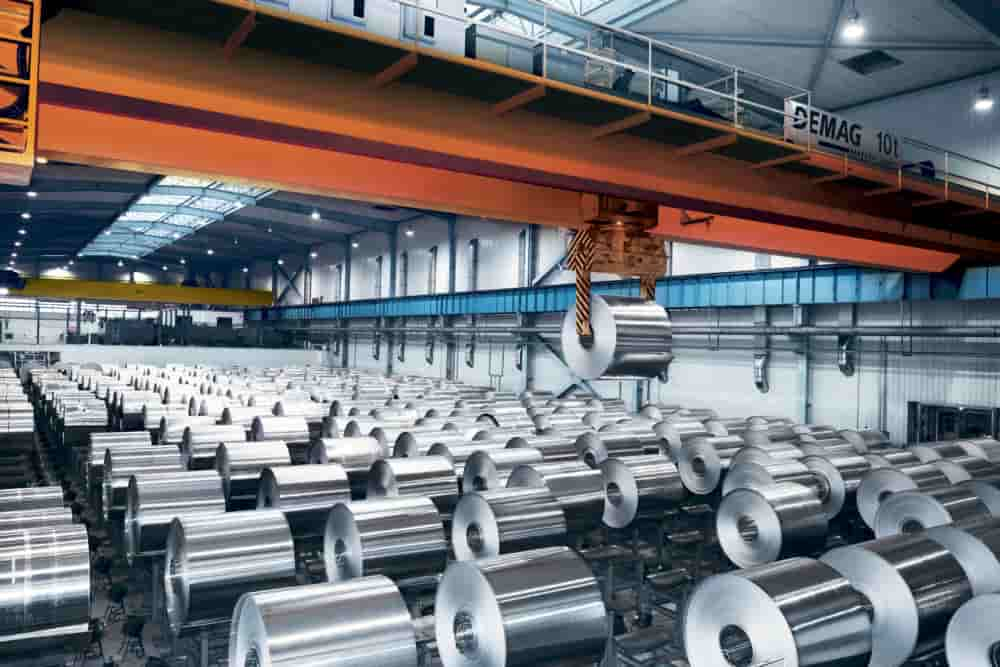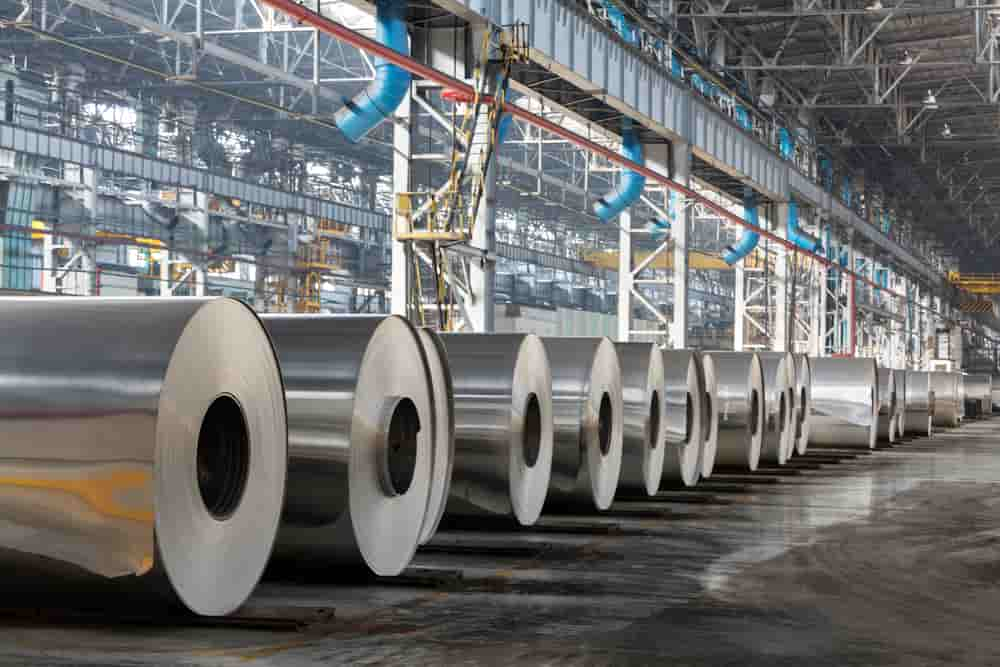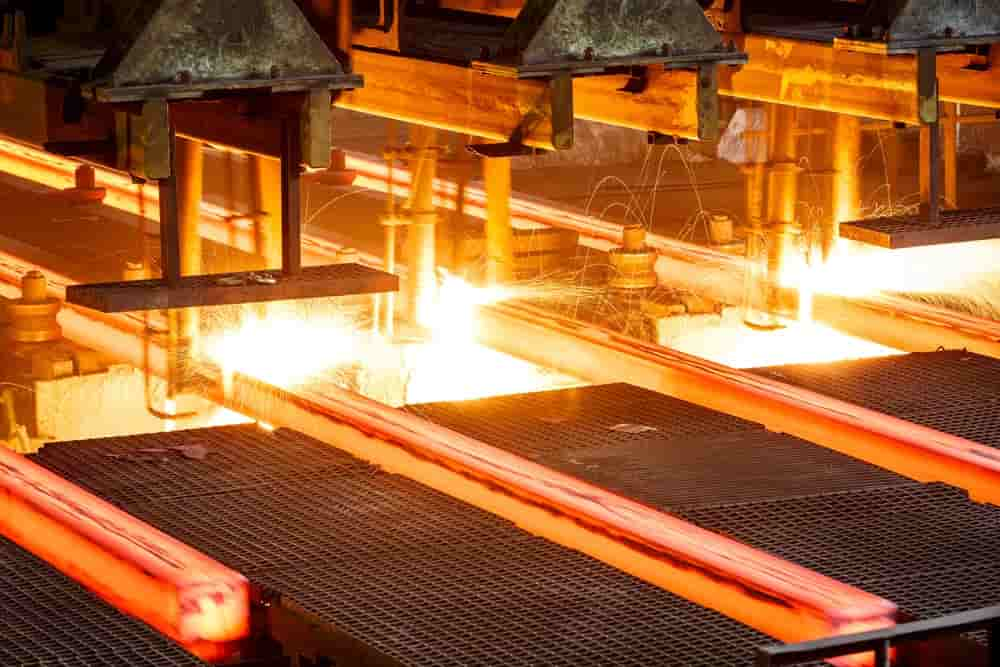Aluminum ore is one of the most abundant minerals in the earth’s crust and contains gibbsite, boehmite, diaspore, and some other minerals as well.
Aluminum mineral uses
Aluminum itself has many uses such as packaging, shipping, and building in the United States.
Bauxite is a rock and not a mineral because it contains a combination of minerals.
Aluminum metal is never found in nature since it interacts with water and air to generate oxides and hydroxides in powdered form.
The extraction of aluminum from the majority of minerals, including feldspar, is extremely energy-intensive and costly.
As such, bauxite is the world’s most important source of aluminum, accounting for 99.9% of the metal’s aluminum.
Also used to produce synthetic corundum.
Due to aluminum’s high melting point, it is utilized in refractory aluminum materials, also known as heat-resistant materials.
Bauxite is the name given to a variety of minerals containing hydrated alumina that are similar to bauxite.
Gibbsite, diaspore, and boehmite are these minerals.
Bauxite develops when silica is leached (washed away) from rocks containing aluminum (that is, rocks high in the mineral feldspar).
This form of weathering happens in tropical and subtropical climates.
This indicates that Brazil, Jamaica, Guinea, and Australia are among the nations having the biggest bauxite reserves.
In the future, kaolin, oil shale, mineral plagioclase, and even coal waste could serve as alternative sources of aluminum.
As long as bauxite stocks remain plentiful and production costs remain low, it is possible that technologies to transform these alternate resources into alumina or metallic aluminum will stay in the experimental phase.

Aluminum mineral properties
The physical and chemical properties of aluminum minerals have been identified by scientists.
Aluminum is the least dense of all commercial metals, with the exception of magnesium.
Aluminum is a great reflector, particularly of ultraviolet light, if applied to the proper surface.
The metal aluminum is odorless, tasteless, and silver-white in color.
Due to a rise in silicon and ductility, silicon-based materials have become highly pliable.
The face-centered cubic structure characterizes crystals of aluminum.
The production of impurity segregation causes crystal lattice concentration in the less pure metal.
The majority of other physical attributes are similarly influenced by cleanliness.
Aluminum is the least dense of all commercial metals, with the exception of magnesium.
Aluminum can also be utilized as a selectively cold or warm wall, or as a body to simulate the black body effect.
Aluminum is just slightly more reflective in the infrared spectrum than gold and silver.
Generally, aluminum metal does not react with air because its surface is covered by a thin layer of oxide that helps protect the metal from air attack.
However, if the oxide layer is damaged and the aluminum metal is exposed, it will again react with oxygen to form an amphoteric oxide (alumina(III) oxide), Al2O3.
Aluminum readily reacts with mineral acids to form solutions containing hydrated Al(III) ions with release of hydrogen H2.
For example, it releases hydrogen gas when dissolved in hydrochloric acid (HCl).
The aluminum reacts with the base and forms aluminates with the release of hydrogen H2.
The electronegativity of oxygen and aluminum is comparable, which allows aluminum to form a covalent bond with oxygen.
This can be seen as a prominent cause of aluminate formation.

Aluminum mineral importance
Only oxygen and silicon are more plentiful in the earth’s crust than aluminum in its basic state which is why the importance of such minerals is higher than others.
It is discovered in conjunction with other elemental metals in volcanic mud and minute particles in extremely rare conditions.
Aluminum is commonly referred to as aluminum outside of the United States.
Electrolysis is used to manufacture metallic aluminum from aluminum ore; a strong electric current produces aluminum at the cathode and oxygen is discharged at the anode.
While aluminum in its purest form is soft and brittle, its mechanical characteristics may be considerably enhanced by alloying it with other metals such as copper, magnesium, or manganese.
Aluminum is just 60 percent as conductive as copper, but its low cost and light weight make it the preferred material for many power transmission applications.
Aluminum is moderately strong (per unit weight), as strong as steel but only about half as strong as titanium, which, when paired with its inexpensive cost, makes it a popular material for creating beer cans, lawn chairs, boats, and airplanes.
As the second most ductile and sixth most ductile metal, it is simple to make; the only difficulty is welding it.
In actuality, aluminum is very reactive, and any exposed surface forms an impenetrable oxide layer (corundum) that inhibits further oxidation.
Similar to magnesium, aluminum will begin to burn at intense heat and may even burn underwater by taking oxygen from the water.

Aluminum mineral characteristics
The characteristics and identification of aluminum are both glaringly obvious. Aluminum A soft, silvery metal represented chemically by the symbol Al. Aluminum is a lightweight, ductile, and ductile metal.
It is non-magnetic, low density, and high conductivity. Aluminum is also incredibly robust and resistant to corrosion.
Aluminum is one of the most important materials of our day since it is lightweight, sturdy, and useful.
Aluminum may be found in our houses, automobiles, trains, aircraft, phones, computers, refrigerator shelves, and modern furniture, yet 200 years ago, virtually little was known about it.
Due to its ease of combining with other elements, aluminum does not exist in its pure form in nature.
This is why it was just recently discovered.
In 1824, aluminum was manufactured for the first time, and it took another 50 years for mankind to discover how to make it industrially.
Aluminum sulfate is the most frequent form of aluminum found in nature.
They are minerals composed of two forms of sulfuric acid: one based on alkali metals (lithium, sodium, rubidium, potassium, or cesium) and the other based on group III metals, primarily aluminum.

The properties, characteristics, and usages of Aluminum and its related minerals were all mentioned in the passage.
If you want to get more information about aluminum and the byproducts of aluminum, don’t hesitate to contact us at any time.











Your comment submitted.